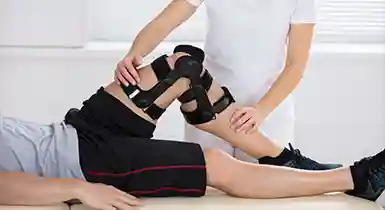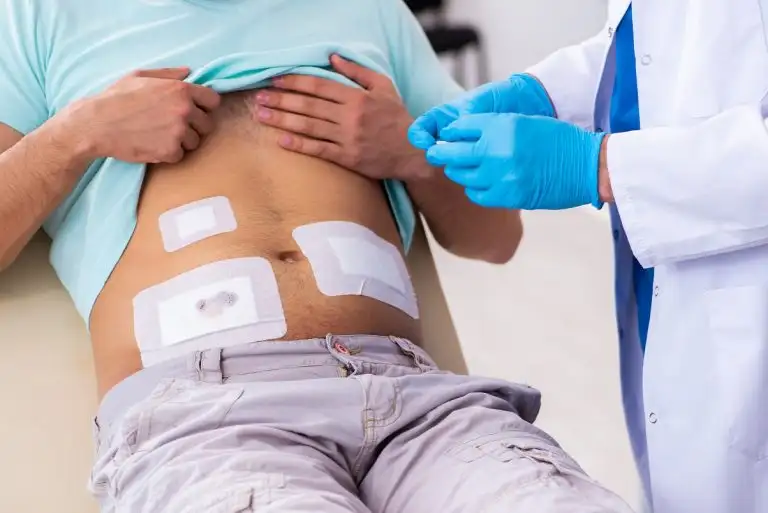Physiotherapy helped Keith go back to playing Sports. Keith, a 25 year old professional football club player twisted his knee joint while playing football a year ago. He complained of pain and instability in left knee. The patient couldn’t walk fast or neither run. Due to this unfortunate event Keith had to discontinue playing football post injury. He was at his peak performance and understood that if he does not seek necessary treatment he would not be able to get back to his game. He then consulted Dr. Nikhil Agrawal, Consultant- Orthopedics & Sports Surgeon at Wockhardt Hospitals, Mira Road. Dr. Agarwal diagnosed him with complete Anterior Cruciate Ligament tear, a common ligament injury seen in footballers and was advised Arthroscopy ACL reconstruction surgery for his knee.
Post-surgery, Keith underwent vigorous physiotherapy rehabilitation and at the end of 1 year he rejoined sports. The role of physiotherapy benefited him and aided his recovery quickly.
Keith went back on the football ground with new vigor and enthusiasm. He recently contributed to his team winning the All Mumbai JP Morgan Football Tournament. Wockhardt hospitals would like to congratulate him on his performance.
With increasing interest in sports and exercise in India, sports injuries have become very common. Injuries sustained during sports or exercise can limit performance of sports person and prevent him from achieving full potential. Today the specialty of sports medicine, also known as sport and exercise medicine is a branch that deals with physical fitness and the treatment and prevention of injuries related to sports and exercise.
At Wockhardt Hospitals the sports medicine comprises of service for physical testing/screening, physical training, nutrition and mental training, surgical intervention and re-habitation program to treat injuries, enhance performance and maintain a desired fitness level.
One of the integral departments working alongside with the rehabilitation of sport injury patients is the Physiotherapy department. Physiotherapy is a rehabilitation science which aims to restore movement and function of an individual who is affected by injury, illness or disability.
The Physiotherapy department at Wockhardt hospitals plays a crucial role when it comes to sports injury recovery. Most athletes are recommended a physiotherapy program after their injuries to aid in their recovery. The role of the physiotherapist also provides education and advice for health promotion, disease and injury prevention
There are several sports injuries that are known to benefit from physiotherapy. From ligament sprains to muscle sprains, fractures and dislocations – it is all about treating the injury professionally and being guided in every step of the way. Post surgeries hospitals devise a physiotherapy regimen to all their patients.
The main goals of physiotherapy and rehabilitation in sports injury cases include:
- Planning exercises regimes to help return athlete to pre-injury function at functional site.
- Personalized exercise prescription is used to improve mobility restrictions.
- Preventive Injury methods and diagnosis for athletes through screening process and exercise
- Helps achieve peak athletic performance.
- Monitoring of athlete
The goal of the center is to improve your daily comfort with rehabilitation, preventative care and non-invasive treatments by the following modalities:
- Ice pack applications – icing could be immensely helpful in minimizing the swelling and pain caused by the injury, and is used by physiotherapists as the starting point when treating an injury.
- Hot pack applications – if the injury does not come with swelling, using a hot pack that is wrapped in a towel is the common procedure for many physiotherapists – as one that is effective in alleviating pain and joint or muscle stiffness.
- TENS – also known as Trans-cutaneous Electrical Nerve Simulator, this small battery-operated device directs little amounts of current into the skin or just over the injury, effective for temporary pain relief.
- Ultrasound – driving sound vibrations directly into the tissues, this procedure can heat up bulky body areas and help the healing process.
- Massage and stretching – both standard techniques in physiotherapy for loosening the muscles or relaxing them while reducing the tissue adhesions and decreasing the swelling.
- Range of motion – the ROM exercises is helpful for improving and maintaining the joint’s range of motion.
- Strengthening exercises – weak muscles are the result of inactivity after an injury, and strengthening exercises are a great way to bulk, repair and maintain the strength of your muscles.
For further queries regarding sport injuries treatment or physiotherapy procedures please contact Wockhardt hospitals.












